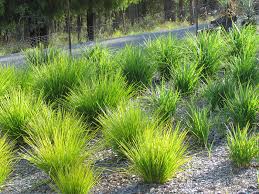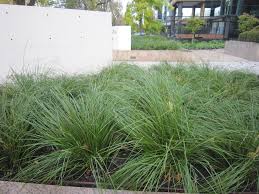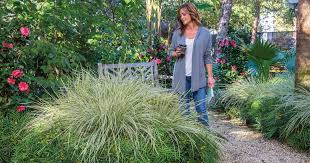Lomandra Grass, scientifically known as Lomandra spp, is a versatile and hardy plant that is often recognized for its resilience and aesthetic appeal. This remarkable plant belongs to the Asparagaceae family and is native to various regions across Australia, particularly thriving in arid and coastal environments. Lomandra Grass has captured the attention of garden enthusiasts and landscapers due to its adaptability and low-maintenance nature.
One of the standout features of Lomandra Grass is its unique ability to thrive in diverse conditions. It is well-suited to both full sun and partial shade, making it an excellent choice for various landscaping projects. Its robust nature allows it to withstand extreme temperatures, droughts, and even salt spray, making it a reliable option for gardens in different climates.
Lomandra Grass boasts an attractive appearance, characterized by its long, slender leaves that resemble grass blades. The leaves are often a vibrant shade of green and grow in dense clumps, creating a lush and visually pleasing effect. This growth pattern not only adds aesthetic value but also contributes to soil stabilization, preventing erosion in various landscapes.
Gardeners and landscape designers appreciate Lomandra Grass for its low-maintenance requirements. Unlike many other ornamental plants, Lomandra Grass does not demand constant care and attention. Once established, it needs minimal watering and can thrive in soils with varying degrees of fertility. This quality makes it an ideal choice for individuals who are new to gardening or those seeking to conserve water in their landscapes.
Lomandra Grass is also known for its utility in various landscaping applications. It can be utilized as ground cover, erosion control, or as an accent plant in gardens. Its versatility extends to both residential and commercial spaces, as it can be used to create natural-looking landscapes, provide texture to hardscapes, or frame pathways and walkways.
In addition to its practical benefits, Lomandra Grass plays a role in supporting local ecosystems. Its dense growth offers shelter and habitat for small creatures, contributing to biodiversity. Additionally, its ability to thrive in different soil types and climates can aid in ecological restoration projects.
To cultivate Lomandra Grass successfully, it is recommended to plant it in well-draining soil and provide adequate water during the establishment phase. Mulching around the base of the plants can help retain moisture and regulate soil temperature. Pruning the grass occasionally can help maintain its neat appearance and prevent overgrowth.
In addition, Lomandra Grass, scientifically referred to as Lomandra spp., stands out as a remarkable plant due to its adaptability, low-maintenance nature, and aesthetic appeal. Its versatility in various landscaping applications, ability to thrive in diverse conditions, and contribution to local ecosystems make it a popular choice among garden enthusiasts and landscapers alike. Whether used as ground cover, erosion control, or a decorative element, Lomandra Grass offers both practical and aesthetic benefits to any outdoor space.
Read Also: Advantages of Cross-Breeding
Growing and Care Guide of Lomandra Grass

Growing and caring for Lomandra Grass (Lomandra spp.) can be a rewarding experience, as this hardy and versatile plant requires minimal effort and offers a range of benefits to your landscape. Here’s a simple guide to help you successfully cultivate and maintain Lomandra Grass:
1. Choosing the Right Location: Lomandra Grass can thrive in various conditions, but it prefers well-draining soil and a spot with either full sun or partial shade. Ensure that the chosen location receives adequate sunlight for healthy growth.
2. Soil Preparation: Prepare the soil by ensuring it is well-draining. If your soil is heavy and tends to retain water, consider amending it with organic matter like compost to improve drainage.
3. Planting: Lomandra Grass can be planted either from seeds or established plants. When planting from seeds, follow the instructions on the seed packet. For established plants, dig a hole slightly larger than the root ball, place the plant in the hole, and backfill with soil. Water the plant well after planting.
4. Watering: During the establishment phase, it’s important to provide regular watering to help the plant develop a strong root system. Once established, Lomandra Grass is drought-tolerant and requires minimal watering. Water deeply but infrequently to encourage deep root growth.
5. Mulching: Applying a layer of mulch around the base of the Lomandra Grass can help retain soil moisture, regulate temperature, and prevent weed growth. Use organic mulch like wood chips or straw.
6. Pruning: Lomandra Grass is low-maintenance when it comes to pruning. Trim the grass occasionally to remove any dead or damaged foliage, maintaining its neat appearance. You can cut the leaves back to about 6 inches above the ground.
7. Fertilizing: Lomandra Grass generally doesn’t require heavy fertilization. If you wish to provide nutrients, use a balanced, slow-release fertilizer during the growing season. Follow the manufacturer’s recommendations for application.
8. Pest and Disease Control: Lomandra Grass is known for its resistance to pests and diseases. However, it’s still a good practice to monitor the plant for any signs of issues and address them promptly if they arise.
9. Cold Protection: While Lomandra Grass is hardy in various climates, young plants may benefit from some protection during extreme cold snaps. You can cover them with a frost cloth or straw to shield them from frost.
10. Division and Propagation: Over time, Lomandra Grass can become crowded. You can divide mature clumps every few years to promote healthy growth. Dig up the clump, carefully separate the sections, and replant them in suitable locations.
By following these simple guidelines, you can enjoy the beauty and resilience of Lomandra Grass in your landscape. Its adaptability, low-maintenance nature, and various landscape applications make it an excellent choice for both novice and experienced gardeners.
Lomandra Breeze Grass

Lomandra Breeze Grass is a type of plant that’s really popular for making outdoor spaces look nice. It’s easy to take care of and has a cool look that people love.
Lomandra Breeze Grass has leaves that look like long, skinny blades of grass. These leaves are a pretty green color and bunch together to make the plant look neat.
The best thing about Lomandra Breeze Grass is that it doesn’t need a lot of care. Once you put it in the ground, you don’t have to water it too much. It’s not picky about the kind of soil it’s in, so it can grow in many places.
Lomandra Breeze Grass is also tough. It can stay happy in the sun or in spots with some shade. If you live somewhere hot, that’s okay for this plant. And if it doesn’t rain a lot where you live, don’t worry – Lomandra Breeze Grass can handle dry times.
People use Lomandra Breeze Grass in all sorts of ways. Some put it on the ground to stop soil from washing away when it rains. Others use it to make nice lines around paths or flower beds. You can even put it on your patio or deck to make things look good.
Taking care of Lomandra Breeze Grass is easy. After you first plant it, give it a good drink of water. After that, you can let it grow without too much trouble. If you see leaves that are dead, you can trim them off to keep the plant looking tidy.
However, Lomandra Breeze Grass is a cool plant that can make your outdoor space look great without needing a lot of work. Its nice look, ability to handle different conditions, and how you can use it in lots of ways make it a top pick for people who want a touch of green without lots of gardening work.
Read Also: Disadvantages of Cross-Breeding
Lomandra Platinum Beauty Grass

Lomandra Platinum Beauty Grass is a remarkable plant that brings a touch of elegance to outdoor spaces. This unique grass, known for its distinctive appearance and easy care, is a favorite among garden enthusiasts.
Lomandra Platinum Beauty Grass has leaves that resemble blades of grass, but what makes it truly special is the captivating silver color that edges its leaves. This silvery touch adds a dash of sophistication to its overall look, setting it apart from other plants.
One of the most appealing qualities of Lomandra Platinum Beauty Grass is its minimal maintenance requirements. Once it’s planted, you won’t need to water it frequently. It’s adaptable to various soil types, making it a versatile choice for different areas of your garden.
This grass is also quite resilient. Whether placed in sunny spots or areas with partial shade, Lomandra Platinum Beauty Grass can thrive. It’s well-equipped to endure hot weather, making it a great fit for warmer regions. Moreover, in places with limited rainfall, this grass can withstand dry periods without a hitch.
Gardening enthusiasts find numerous creative uses for Lomandra Platinum Beauty Grass. Some prefer it as ground cover, helping prevent soil erosion. Others use it to create attractive borders around pathways or flower beds. The grass also looks fantastic in containers on patios or decks, adding a touch of style to outdoor spaces.
Taking care of Lomandra Platinum Beauty Grass is a breeze. After planting, give it a good soaking of water. From there, it requires minimal fuss. If you spot any tired or dead leaves, simply trim them off to maintain its fresh appearance.
In summary, Lomandra Platinum Beauty Grass is a distinctive plant that introduces an air of refinement to your outdoor area without demanding excessive upkeep. Its eye-catching silver-edged leaves, adaptability to various conditions, and versatility in landscaping make it an ideal choice for individuals seeking a graceful and low-maintenance addition to their garden or landscape.
Read Also: How to Select The Perfect Nike Shoes For Your Kids
